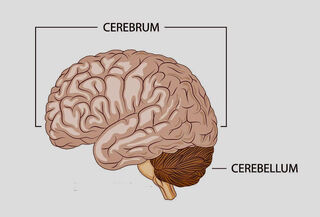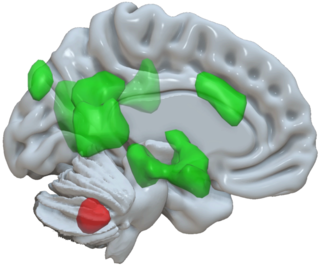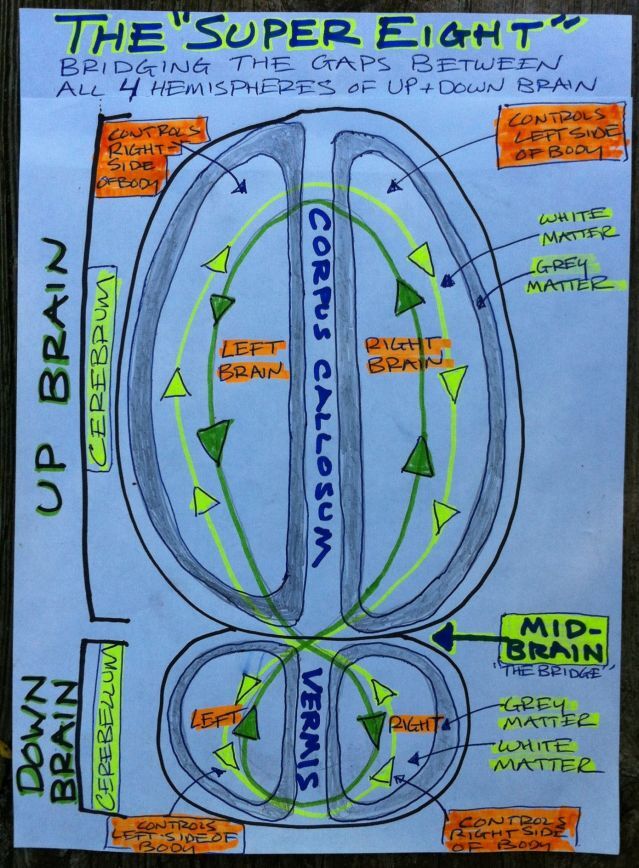Memory
New Discovery: The Cerebellum Enhances Emotional Memories
Cerebellar-cerebral connections affect how the brain stores emotional memories.
Posted October 7, 2022 Reviewed by Davia Sills
Key points
- Not long ago, the cerebellum was seen as a motor-function-only brain structure that coordinated muscles but didn't affect thoughts or emotions.
- New research suggests that the cerebellum and the strength of its connections to regions of the cerebrum may enhance emotional memory.
- An fMRI study of 1,418 people found that the vermis region of the cerebellum plays a vital role in the enhancement of emotional memories.

Historically, the cerebellum was considered a "non-thinking" part of the human brain responsible primarily for motor functions related to coordination and fluid movements.
However, since the late 1990s, human and animal studies have found that specific microzones within the cerebellum play a role in non-motor functions related to cognition and emotion. Accumulating evidence also suggests that certain regions of the cerebellum may coordinate our thoughts much like other cerebellar regions of interest (ROIs) coordinate our movements.
Numerous terms are used to describe functional connectivity between the cerebrum and cerebellum, such as cerebro-cerebellar circuits, cerebellar-cerebral networks, or corticocerebellar connections. Different researchers use slightly different terminology to describe cerebral-cerebellar interplay.

As seen in this image with green and red highlights, researchers from the University of Basel have identified previously unknown ways that regions of interest in the cerebellum and what they call "corticocerebellar connections" linked to specific ROIs in the cerebrum are involved in emotional memory enhancement. These findings (Fastenrath et al., 2022) were published in the peer-reviewed journal PNAS.
This whole-brain fMRI study of 1,418 healthy adults investigated whether the human cerebellum and cerebellar-cerebral connections are involved in what the authors call "the phenomenon of superior episodic memory for emotionally arousing visual information."
During this study, participants were shown emotion-evoking images while having their brains scanned during different stages of emotional memory encoding and retrieval. "[Our findings] indicate that the cerebellum is an integral component of a network that is responsible for the improved storage of emotional information," senior author Dominique de Quervain said in a news release.

During this study, first author Matthias Fastenrath and colleagues found over two dozen cerebral ROIs were involved in emotional memory enhancement. They also found robust evidence that a cluster of ROIs located primarily within the vermis of the cerebellum is activated during enhanced emotional memory encoding. The cerebellar vermis is also activated when people recall emotional personal life events, and accumulating evidence suggests that this ROI plays a role in emotional memory retrieval and emotional intelligence.
Communication between the cerebrum and cerebellum is bidirectional. Emotional information can flow "upstream" from the cerebellum to the cerebrum or "downstream" in the opposite direction.
"Taken together, [our] analysis has shown that from the 25 cerebral ROIs involved in emotional memory enhancement, 13 ROIs showed increased connection strength with the cerebellum, mostly in the direction from the cerebellum to cortical ROIs, in two cases in the opposite direction and in another two cases in both directions," Fastenrath et al. explain.
New Research Helps to Decode a Decades-Old Brain Map.
For the next part of this post, I'm going to shift gears and filter the latest (2022) research on how the human cerebellum and corticocerebellar connections are involved in emotional memory enhancement through my lived experience as an athlete turned science writer.
As a young athlete, my neuroscientist father coached me. Dad strongly believed that optimizing cerebellar functions and cerebro-cerebellar connectivity was key to peak performance and not overthinking during sports. For my first book, The Athlete's Way, published in the aughts, we created a split-brain model called "up brain-down brain" as shorthand for the cerebrum and cerebellum.

Back in 2009, I drew a brain map (above) with Sharpies and different colored highlighters that illustrates the bidirectional flow of information from the left and right hemispheres of the cerebrum and cerebellum. As you can see in this simplistic illustration, the cerebellar vermis connects the left and right hemispheres of the cerebellum. The green and yellow arrows I used to draw a "Super 8" were inspired by the Asteroids video game and are intended to show how information flows bidirectionally between "up brain-down brain."
I've spent decades trying to decode this brain map. What jumped out at me this morning when I read the open-access paper by Fastenrath et al. for the first time was that they've pinpointed lobule IX of the cerebellar vermis as a primary region of interest related to the enhancement of emotional memories.
Emotional Memories Are Enhanced by Robust Cerebellar Connections.
"There is mounting evidence indicating that the cerebellum, in particular the cerebellar vermis, and its connections to several cerebral regions, including the limbic system, are involved in emotional functions, including emotional perception, emotional recognition, emotional processing, and fear conditioning," the authors write in their paper's discussion section. "[Our] present findings now suggest that the cerebellum is also part of a circuitry involved in the emotional enhancement of episodic memory."
The authors note that within cerebellar-cerebral circuitry, several cerebellar connections with increased connection strength to the amygdala and hippocampus correspond with enhanced emotional memories. Other bidirectional connections associated with emotional memory enhancement appear to involve the anterior cingulate cortex.
In closing, the authors conclude that their findings "expand knowledge about the role of the cerebellum in complex cognitive and emotional processes" and suggest that "the cerebellum is an integral part of a network involved in emotional enhancement of episodic memory."
Now that researchers have identified previously unknown ways that the cerebellum and its connections to the cerebrum influence emotional memories, the next step is to apply these findings to treat psychiatric disorders related to aberrant emotional circuitry, such as post-traumatic stress disorder (PTSD) and autism spectrum disorder.
References
Matthias Fastenrath, Klara Spalek, David Coynel, Eva Loos, Annette Milnik, Tobias Egli, Nathalie Schicktanz, Léonie Geissmann, Benno Roozendaal, Andreas Papassotiropoulos, and Dominique de Quervain. "Human Cerebellum and Corticocerebellar Connections Involved in Emotional Memory Enhancement." PNAS (First published: October 03, 2022) DOI: 10.1073/pnas.2204900119




